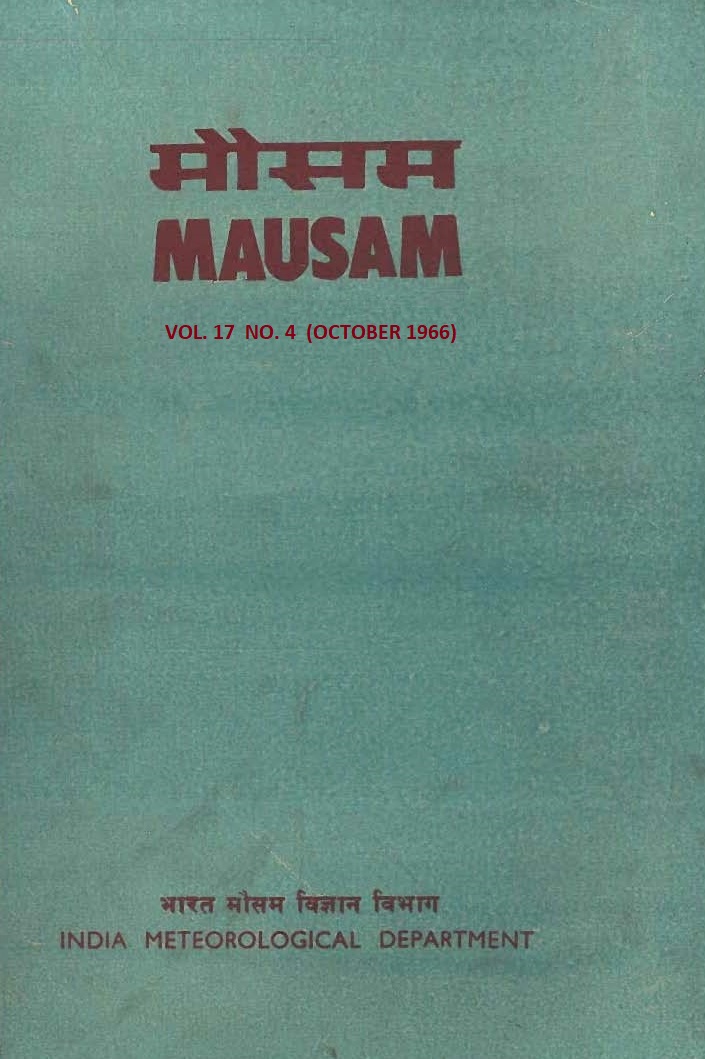Earthquakes in India and neighbourhood
DOI:
https://doi.org/10.54302/mausam.v17i4.5753Abstract
The present paper deals with the geological structure of the seismic belt of India and neighbourhood. The relation of the epicentres of earthquakes to the tectonics of the region has been described and the seismic belt has been divided into six major seismic zones. The origin of activity in these seismic zones of Cutch, Baluchistan, Kashmir, Northern India, Assam and Burma has been traced to various groups and systems of the geological age. The Himalayan zone is a part of the great belt of Tertiary folding; the effects of which have not yet died down. The earth movements in Cutch area are considered to be a part of the same events of the Tertiary age which brought the folding, faulting and subsidence of the Baluchistan coast line and indicates the persistence of instability in this region.
The Baluchistan arc is marked by a sharp re-entrant angle near the Quetta region which form, a nucleus of all the earth movements. There is a large gathering up of the strata in this region. The frequency of major earthquakes in the Kashmir region is much less, even though the wedging of the Peninsular rocks has caused considerable deflection of the mountain waves. This may be due to the fact that the over-thrusting of rocks from both sides of this bend is directed towards a central axis. There seems to be a southward migration of seismic activity in Northern India and the locus of activity is along the southern margin of the hills. There is a sharp re-entrant angle near the boundary of Assam, Burma and China. The Himalayan and Burmese mountain arcs have been very sharply deflected by the peninsular rocks and the duel forces of the sharp wedging due to the thrust faults of the Himalayas and the Burmese mountain arcs have complicated and intensified the seismicity of the Assam region. The seismic activity of this region shows that Assam is one of the most unstable regions of the world and has been the scene of nearly a dozen major earthquakes during the last century.
Downloads
Published
How to Cite
Issue
Section
License
Copyright (c) 1966 MAUSAM

This work is licensed under a Creative Commons Attribution-NonCommercial 4.0 International License.
All articles published by MAUSAM are licensed under the Creative Commons Attribution 4.0 International License. This permits anyone.
Anyone is free:
- To Share - to copy, distribute and transmit the work
- To Remix - to adapt the work.
Under the following conditions:
- Share - copy and redistribute the material in any medium or format
- Adapt - remix, transform, and build upon the material for any purpose, even
commercially.



